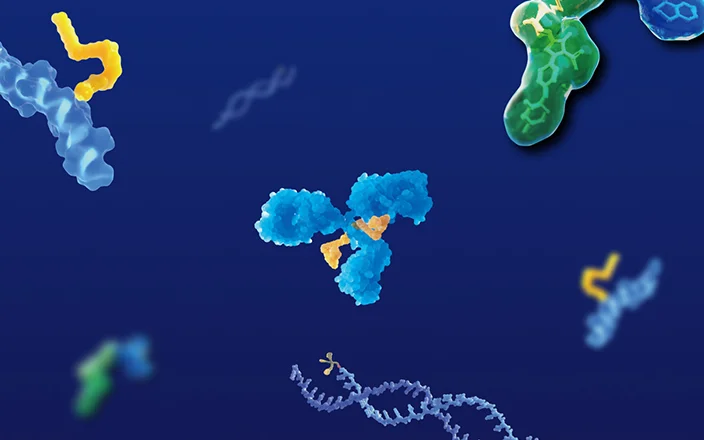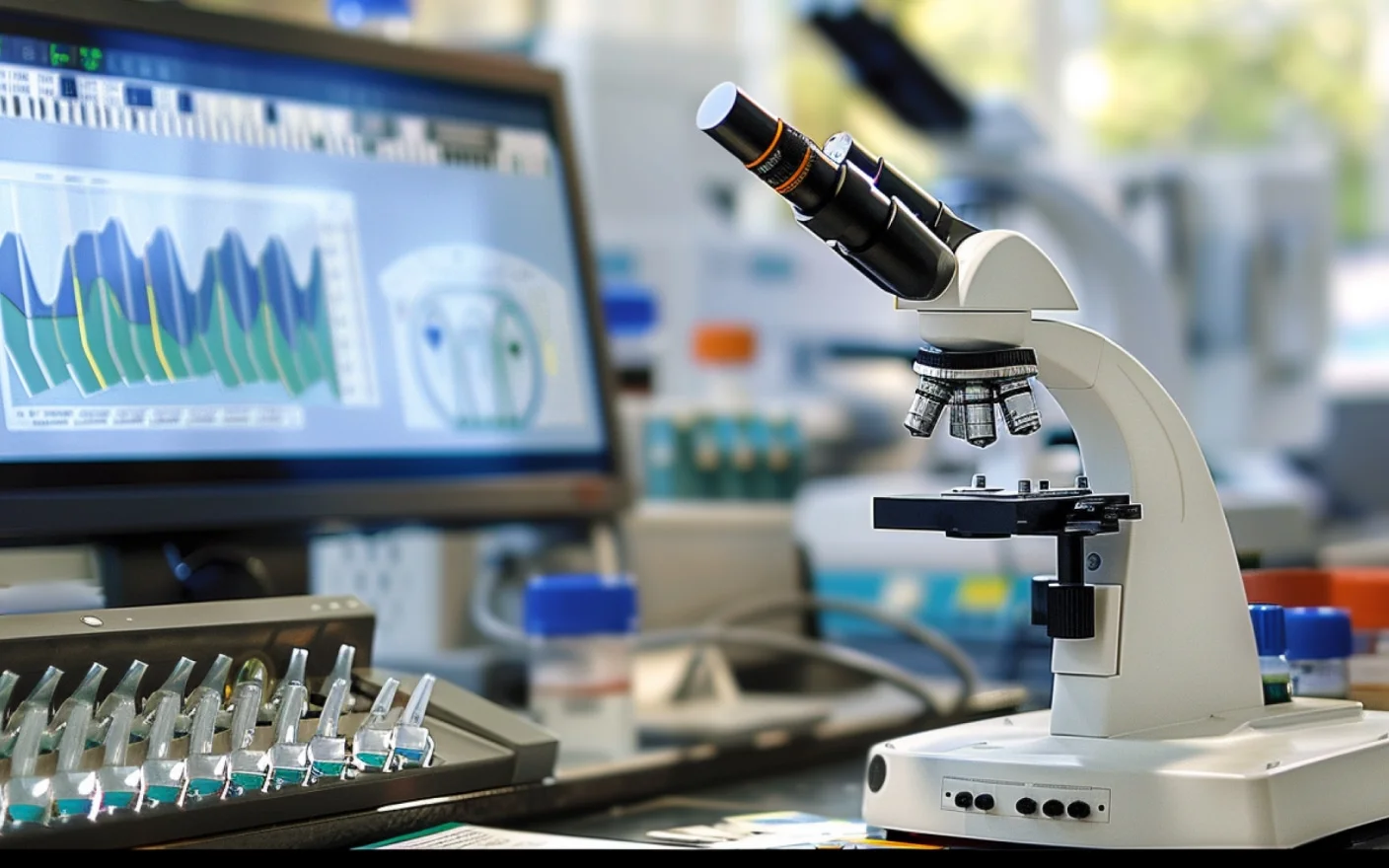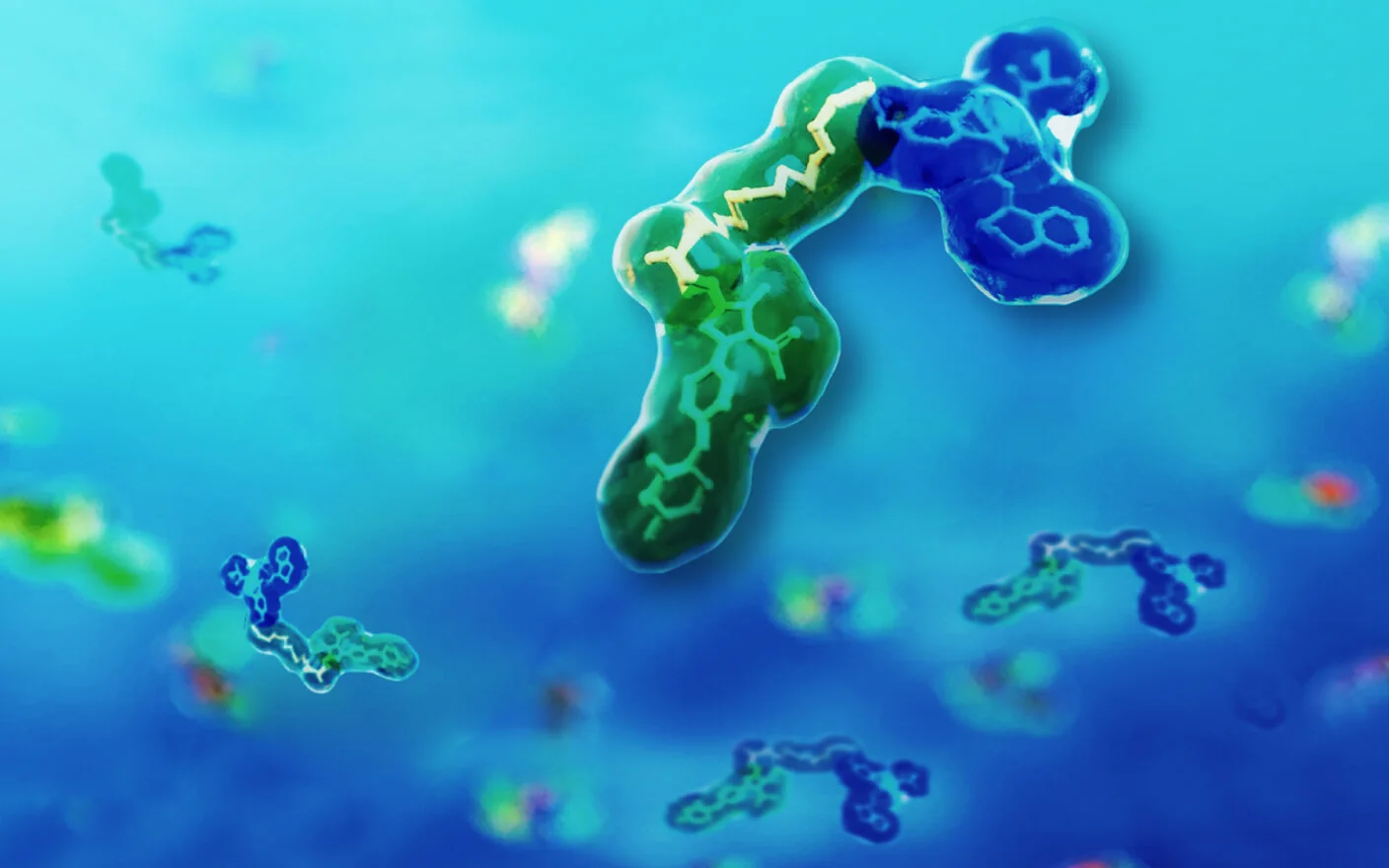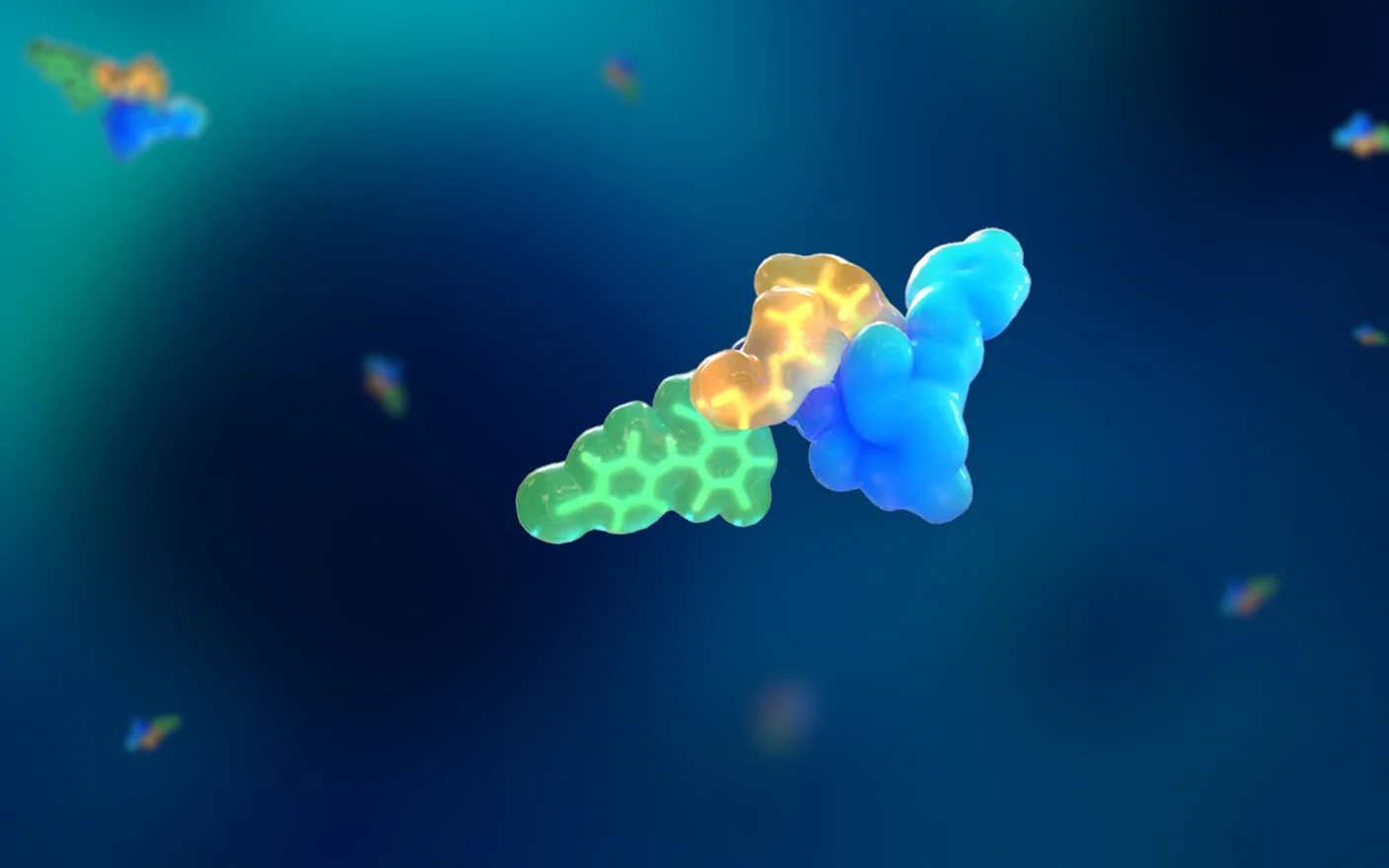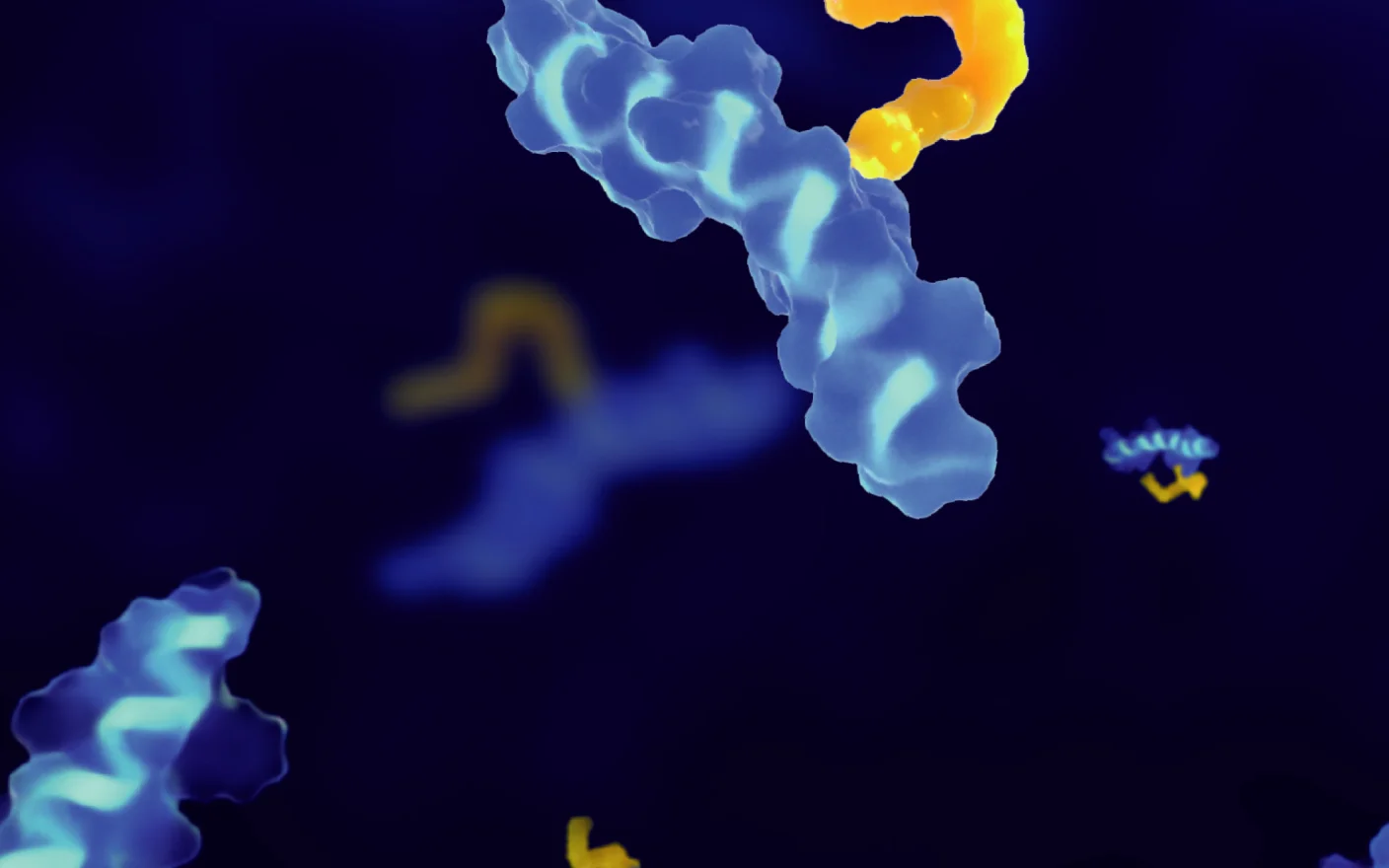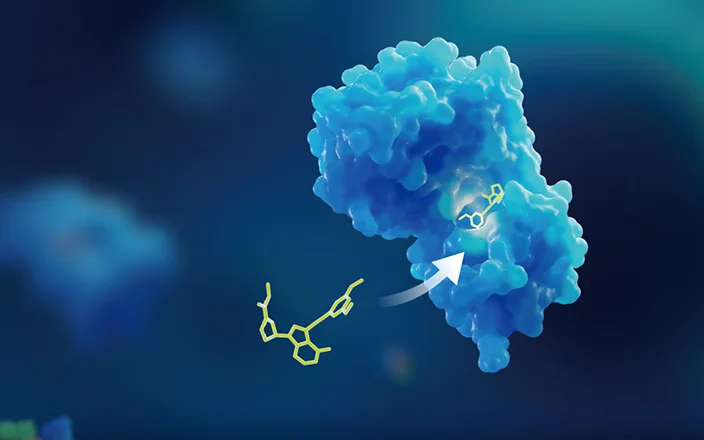As the number of approved oligonucleotide drugs increases, they are attracting greater attention in the pharmaceutical industry. However, due to their novelty, chemical complexity, and evolving regulatory landscape, oligonucleotides present more DMPK challenges and uncertainties. In this Q&A blog, we address common questions from researchers, such as metabolic stability, plasma protein binding, tissue distribution, administration, and bioanalysis.
Antisense oligonucleotide vs siRNA, what are their ADME differences?
In in vitro ADME studies, unmodified single-strand oligos (ASOs) degrade faster due to exposed phosphodiester bonds. Duplex structures (e.g., siRNA) stabilize via base pairing, reducing nuclease access. However, chemical modifications enhance both forms’ stability, and results may vary on a case-by-case basis. Protein binding of oligonucleotides can influence cellular uptake through endocytosis and may enhance pharmacological activity. These effects are prominently observed with ASOs but are rarely seen with siRNAs. The degree of protein binding is largely determined by the chemical modifications of the oligonucleotides. Notably, single-stranded oligonucleotides, such as ASOs, generally exhibit higher protein binding compared to duplex structures like siRNAs.
Is there a stability difference between single-strand and duplex oligonucleotides?
Unmodified single-strand oligos degrade faster due to exposed phosphodiester bonds. Duplex structures (e.g., siRNA) stabilize via base pairing, reducing nuclease access. However, chemical modifications enhance both forms’ stability, and results may vary on a case-by-case basis.
Is there any FDA guidance for oligonucleotides?
Yes. The FDA’s Nonclinical Safety Assessment of Oligonucleotide-Based Therapeutics: Guidance for Industry provides a framework for preclinical studies, addressing toxicity, pharmacokinetics, immunogenicity, and organ-specific risks. This document is critical for ensuring compliance and safety during drug development.
LC-MS vs qPCR, which is better for oligonucleotide bioanalysis?
The choice between LC-MS and qPCR for oligonucleotide bioanalysis depends on the specific needs of the study. The LC-MS method does not require specific reagents and can typically be developed within 3-5 days. It offers higher specificity, although its sensitivity is lower, with a lower limit of quantification (LLOQ) of approximately 5-10 ng/mL. In contrast, the RT-qPCR method requires the design, synthesis, and selection of primers and probes, which may take 2-3 weeks. While RT-qPCR has lower specificity compared to LC-MS, it provides significantly higher sensitivity, with an LLOQ of around 5-50 pg/mL.
How to deliver antisense oligonucleotides into the Central Nervous System (CNS)?
The conventional method for delivering antisense oligonucleotides (ASOs) to the CNS is lumbar intrathecal administration. However, direct puncture techniques can lead to a high failure rate and inconsistencies in the concentration of the test article within cerebrospinal fluid (CSF). Therefore, we recommend the lumbar intrathecal cannulation method for more reliable administration. WuXi AppTec DMPK reports a success rate of over 90% for intrathecal injections in monkeys, exceeding the upper limit of the 30-90% success rates reported in the literature, and a nearly 100% success rate in lumbar intrathecal cannulation.
How do you address non-specific binding in in vitro and in vivo oligo assays?
Oligos inherently exhibit non-specific binding. To mitigate this, we use low-absorption materials in assays to ensure accurate measurements. For example, non-specific binding during ultrafiltration can be reduced by pretreating filters with detergents and optimizing procedural steps.
What is the general recommendation for selecting oligonucleotides in vitro metabolic models?
When selecting in vitro metabolic models for oligo, plasma stability should be the primary consideration. Suitable tissue systems should be chosen based on the therapeutic target; for example, siRNA conjugated with Gal-NAC preferentially targets liver S9.
Can enzyme activity in in vitro systems be sustained over a 24-hour incubation period?
Published data on commercial oligos support a linear metabolic trend within 24 hours, validating this timeframe for reliable results. We have confirmed stable RNase activity in plasma and liver homogenate over 24 hours using a fluorometric assay kit.
What is an Electrophoretic Mobility Shift Assay (EMSA)? How is EMSA used in plasma protein binding (PPB) studies?
Electrophoretic mobility shift assay (EMSA) is a technique used to study protein-nucleic acid interactions by detecting changes in the mobility of nucleic acids when bound to proteins during gel electrophoresis. In PPB studies, EMSA can be used for the semiquantitative determination of PPB. However, EMSA has an intrinsic limitation in measuring accurate PPB, it assumes that the binding equilibrium remains the same during sample loading and electrophoresis. If the conditions change, the measured value could be inaccurate. Thus, it is essential to cross-validate EMSA results with orthogonal methods like ultrafiltration for accuracy.
Will oligonucleotides degrade faster in fresh plasma compared to frozen plasma?
Our internal data shows no significant difference in oligonucleotide metabolism between fresh and frozen plasma. While environmental factors during storage or handling could theoretically impact stability, our studies confirm consistent metabolic rates under both conditions.
For oligo metabolism studies in liver S9, should we test the low pH data?
For liver S9, we studied the metabolism of GalNAc-conjugated siRNA at pH 5.0 and 6.0 to simulate its endo-lysosomal metabolism and determine the more suitable pH for mimicking physiological acidic conditions. The results showed that both the antisense strand (AS) and the GalNAc-conjugated sense strand (SS) of the siRNA could be metabolized at pH 6.0.
Talk to a WuXi AppTec expert today to get the support you need to achieve your drug development goals.
Committed to accelerating drug discovery and development, we offer a full range of discovery screening, preclinical development, clinical drug metabolism, and pharmacokinetic (DMPK) platforms and services. With research facilities in the United States (New Jersey) and China (Shanghai, Suzhou, Nanjing, and Nantong), 1,000+ scientists, and over fifteen years of experience in Investigational New Drug (IND) application, our DMPK team at WuXi AppTec are serving 1,600+ global clients, and have successfully supported 1,700+ IND applications.
Related Services and Platforms




-

 In Vitro ADME ServicesLearn More
In Vitro ADME ServicesLearn More -

 In Vivo PharmacokineticsLearn More
In Vivo PharmacokineticsLearn More -

 DMPK BioanalysisLearn More
DMPK BioanalysisLearn More -

 Novel Drug Modalities DMPK Enabling PlatformsLearn More
Novel Drug Modalities DMPK Enabling PlatformsLearn More -

 Physicochemical Property StudyLearn More
Physicochemical Property StudyLearn More -

 Permeability and Transporter StudyLearn More
Permeability and Transporter StudyLearn More -

 Drug Distribution and Protein Binding StudiesLearn More
Drug Distribution and Protein Binding StudiesLearn More -

 Metabolic Stability StudyLearn More
Metabolic Stability StudyLearn More -

 Drug Interactions StudyLearn More
Drug Interactions StudyLearn More -

 Rodent PK StudyLearn More
Rodent PK StudyLearn More -

 Large Animal (Non-Rodent) PK StudyLearn More
Large Animal (Non-Rodent) PK StudyLearn More -

 Clinicopathological Testing Services for Laboratory AnimalsLearn More
Clinicopathological Testing Services for Laboratory AnimalsLearn More -

 High-Standard Animal Facilities and Animal WelfareLearn More
High-Standard Animal Facilities and Animal WelfareLearn More -

 Preclinical Formulation ScreeningLearn More
Preclinical Formulation ScreeningLearn More -

 Novel Drug Modalities BioanalysisLearn More
Novel Drug Modalities BioanalysisLearn More -

 Small Molecules BioanalysisLearn More
Small Molecules BioanalysisLearn More -

 Bioanalytical Instrument PlatformLearn More
Bioanalytical Instrument PlatformLearn More -

 PROTAC DMPK ServicesLearn More
PROTAC DMPK ServicesLearn More -

 ADC DMPK ServicesLearn More
ADC DMPK ServicesLearn More -

 Oligo DMPK ServicesLearn More
Oligo DMPK ServicesLearn More -

 PDC DMPK ServicesLearn More
PDC DMPK ServicesLearn More -

 Peptide DMPK ServicesLearn More
Peptide DMPK ServicesLearn More -

 mRNA DMPK ServicesLearn More
mRNA DMPK ServicesLearn More -

 Covalent Drugs DMPK ServicesLearn More
Covalent Drugs DMPK ServicesLearn More
Stay Connected
Keep up with the latest news and insights.






